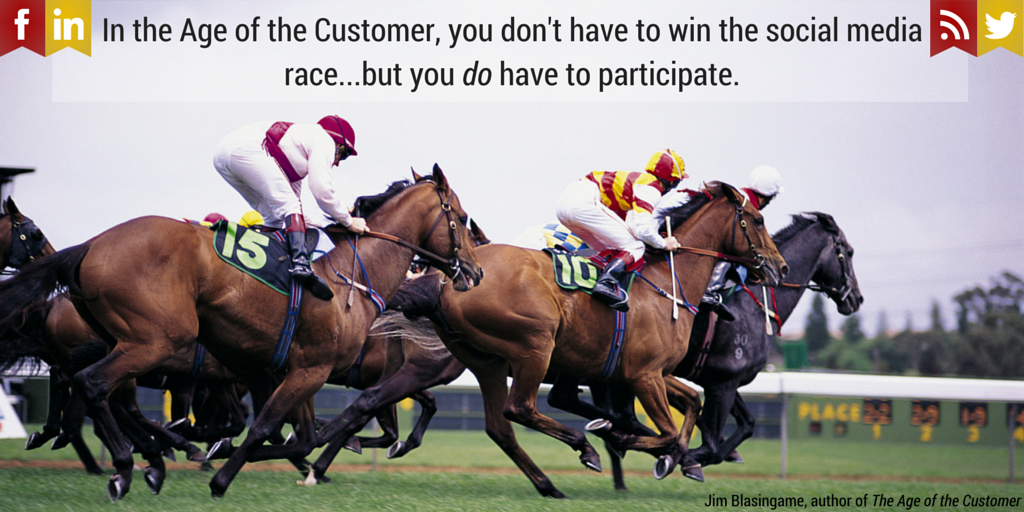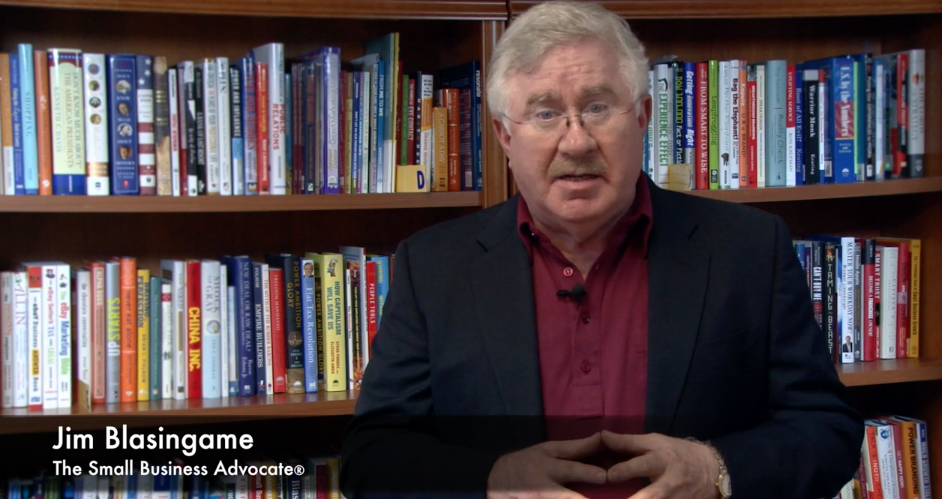AUDIO: Are you meeting your customers’ new expectations?
It’s the Age of the Customer, and your customers want to know about your business. But it’s not just the business practices they want to know about. They want to see your business from every angle.
Your prospects and customers have new expectations. Jim Blasingame explains that if you’re doing business the way you’ve always done it, you won’t meet your customers’ new expectations and your business will not survive.
Click the image below to start the recording.
VIDEO: Allow customers to see your business’s authentic side
Age of the Customer author and Small Business Advocate Jim Blasingame discusses the importance of introducing your customers to your business or company’s authentic side and offers three suggestions to help you convey your vision and values to your customers. Content is King — and we’re consumers of many different types of online content — but most content lacks the necessary engagement customers are craving. Give them authentic words.
Click the image to start the video.
Serving customers online is not an option, it’s imperative
In this new Age of the Customer, accessibility to a business through online content is nonnegotiable.
Four years ago, we asked this question about e-commerce: How much of your small business’ annual revenue comes from online sales?
 · Five percent said all revenue came from e-commerce.
· Five percent said all revenue came from e-commerce.
· Fourteen percent said more than half of their sales came from the Internet.
· A little more than fifty percent said e-commerce represented less than 50% of total sales.
· Twenty-five percent said they had no online sales at all.
E-commerce has been around for a big chunk of the commercial Internet age, which began in 1995 when unencumbered access to the Internet was fully allowed. In terms of historical marketplace practices, e-commerce is just a baby. So I’m actually quite pleased with the mix of responses we received as it indicates 75% of small businesses are generating some e-commerce revenue.
But over the next five years, there will be significant increased pressure to generate online sales.
According to the research firm Forrester, online sales will reach $248.7 billion in the next five years, accounting for 8 percent of total U.S. retail sales by 2014. But the next statistic may be more important (read: ominous) for small businesses.
Forrester also predicts that by 2014, over half of all retail sales will be influenced by online product and company research before customers make a purchase. The reason this stat is so significant is because of another piece of research that produced this astonishing number: Half of small businesses DO NOT have a website.
Regardless of size or industry, no business can expect to be successful in the future without a web presence. Even if you don’t sell online, you MUST be available online so prospects can find you the way people are looking today. Here are two words that make having a website even more of an imperative: local search.
Local search is increasingly replacing the phone book or dialing 411. Even when customers don’t expect a business to have e-commerce capability, like a restaurant or dry cleaners, they do expect to be able to find you online, with product offerings, directions and a clickable phone number.
If you don’t have a website, get one; today you can actually get a simple one for free. And unless you sell nuclear products or Stinger missiles, please, find a way to offer e-commerce to your customers; It’s not free, but it’s no longer cost-prohibitive.
Serving customers online is not an option, it’s an imperative.
Allow customers to see your authentic side through writing
Adam Smith, the father of modern economics and author of The Wealth of Nations (1776), identified writing as one of the three most important inventions of mankind – the other two being money and economic tables.
More than two centuries later, the Internet has powered the written word to levels unimagined only a generation ago, let alone during Smith’s era. It is the driving force behind a handy new-media maxim, “Content is King.”
In an era when content is king, if you want to connect with customers competitively and stay connected, you have to produce more written words than ever before. But not just any words – authentic words.
After all, today we’re consumers of many kinds of online content. From streaming audio and video to multi-media formats on iTunes and YouTube. In the midst of all it, the most popular content — hence the Kingly content — still remains most popular in its graphic form, like what Smith would have used.
Since 1999 – long before blogs and social media – two things I’ve encouraged small business owners to do is:
- develop better writing skills
- publish more of their own words online that communicate to and connect with customers.
Since 2010, prospects and customers want to read about the stuff you sell before they meet you. But they want more than marketing messaging; they want authentic, straight-from-the-horse’s-mouth information that delivers three things that are increasingly a big deal to customers:
1. the voice,
2. the vision, and
3. the values of the human beings behind the stuff, as unartful and unscripted as they may be.
So don’t worry if you’re not a professional wordsmith. When you need fancy words for strategic marketing messaging, online or otherwise, hire a pro.
But you must become comfortable with conveying your vision and values online, in your own words – the voice – about a variety of issues from explaining how to use a product you sell to a local cause you care about to your philosophy on serving customers. And it’s just fine if some of these authentic words also come from your employees who customers will get to know.
In the Age of the Customer®, now armed with as much information as the businesses they patronize, customers expect to be treated more like insiders. And the good news is that no one makes this connection as effectively and authentically as a small business. Congratulations.
Let customers read about your authentic side with your voice, vision, and values.









